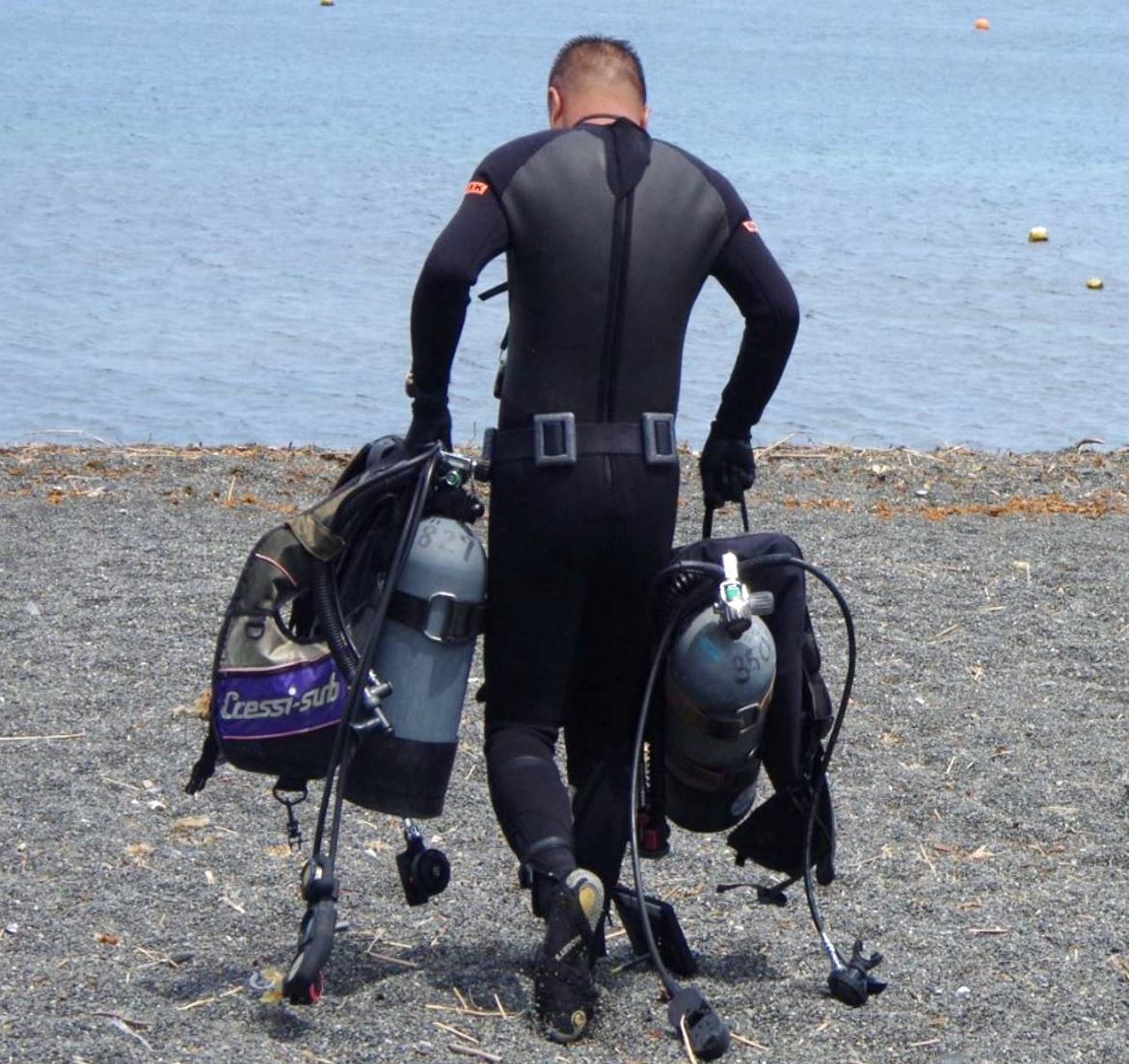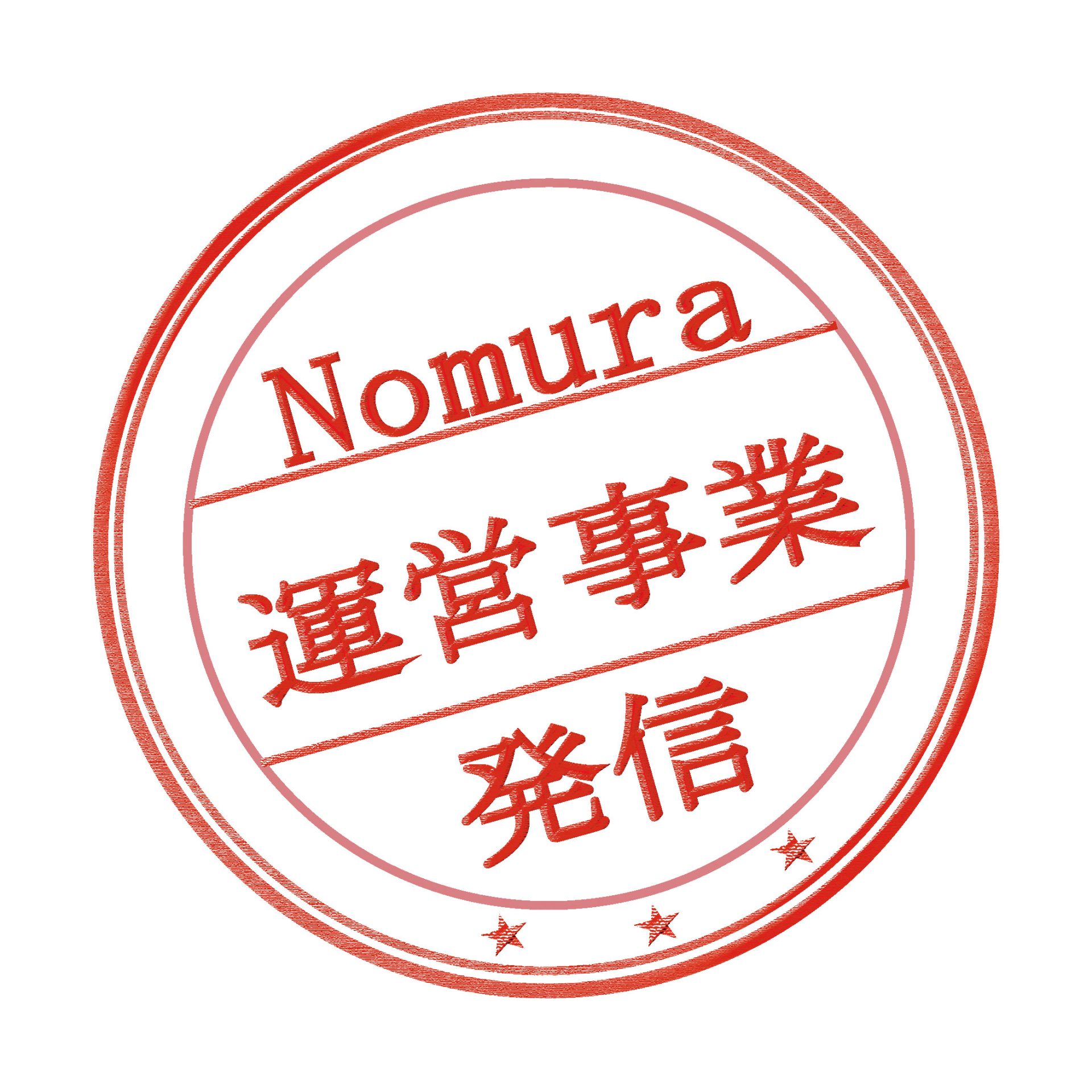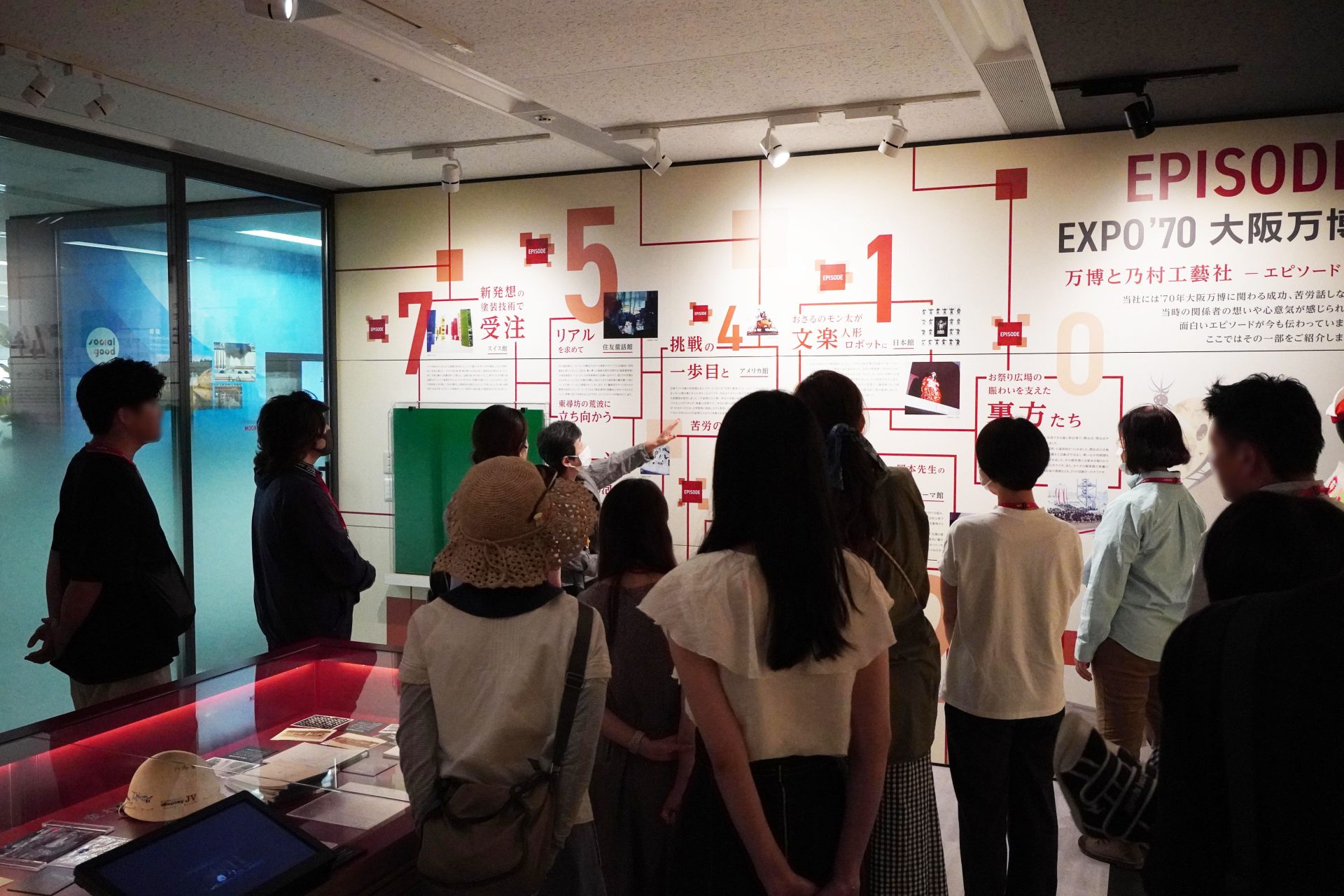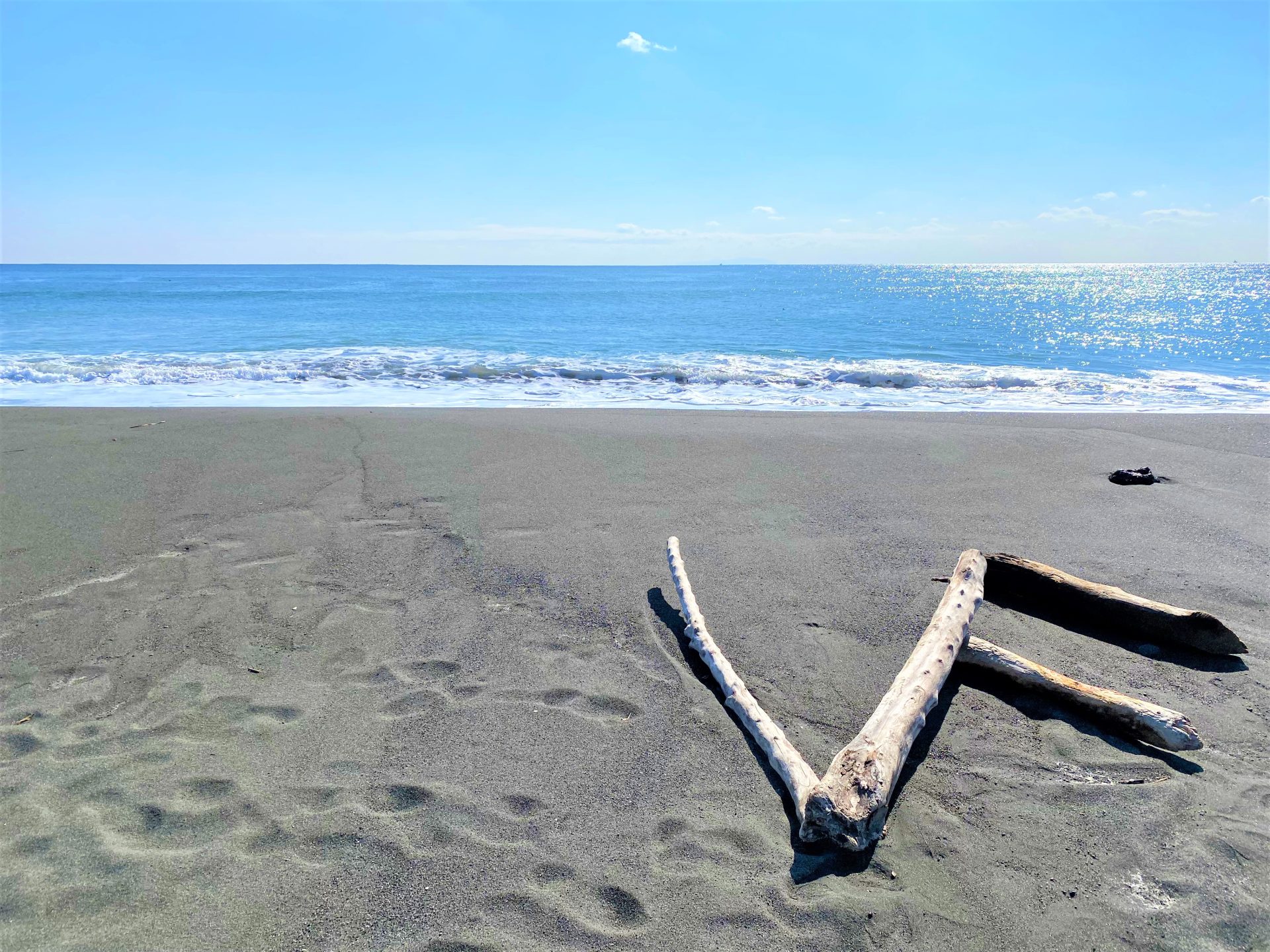
Hideki's Yuruyuru Nagisahoki / ep7 - "What is this?" Quiz edition -
2022/02/18- text and edit by
- Hideki Sato
Why post after a long time
Hello everyone, this is Hideki from Chigasaki, Shonan.
It's been a year and nine months since the last "Nagisahouki".
In the past two years since the pandemic, posts on with/after-corona have become mainstream on this nomlog. Among such articles, I wondered, "How much meaning does it really have to publish a very private theme like me, who does not seem to be useful to the world?" I had doubts about the significance of my existence, and stopped writing for a while.

* nomlog 's self-proclaimed "Chopstick rest article", "Nagisahoki", asked himself, "Isn't it necessary in the corona disaster?"
Meanwhile, at the nomlog editorial meeting held at the end of last year, "The editorial committee chooses! Summary of Recommended nomlog Articles While talking about this, I learned that there were people who were looking forward to this series, so I decided to try again (strictly speaking, typing on the keyboard).
Currently, many people are refraining from going out due to the sixth wave caused by the rapid spread of the new coronavirus infection.
Therefore, this time we decided to deliver the drifting object quiz that we have been giving notice for a long time.
Although it is on the web, I hope that you will enjoy the quiz about drifting objects as if you were walking on the beach.
Also, please enjoy a little story about drifting objects!
Now, as a beginner's class, let's get used to the problems that seem easy!
Look at the picture and try to think of the answer.
Wreckage quiz, start!
Question 1. What is this? Something like this hidden in sand and gravel!

*It is a washed-up kimono that can be said to be a standard for walking along the beach!
The correct answer is...
.
.
.
.
.

The correct answer to question 1 was "beach glass (sea glass)"!
It is mainly fragments of glass products such as bottles. Was it too easy?
Beach glass is a piece of glass that has been washed away by waves and sand, and whose corners have been removed over time, giving the surface a unique frosted glass-like texture. Many people use it to create art, objects, and accessories with the motif of the sea. (I am one of them)
From Shonan, where I live, "beach money" initiatives using this beach glass are spreading.
BeachMoney is a unique system that allows you to use beachgrass found during beach cleaning (picking up trash on the beach) as currency at member stores.
The purpose is not to make money, but to clean up the local beach while enjoying treasure hunting.
Currencies accepted as currency are those that are 3cm or longer on any side and have rounded corners that do not cause injury.
Rare colors have a high value, and the maximum price is 200 yen. Common white and brown are worth about 30 yen. The rule is that one use is up to 300 yen. Nice idea! If you are interested, please refer here ↓
Then I found these things!
Question 2. What are A and B? A has a rough texture and B is smooth!

*A is sometimes sold at pet shops.
Well, the correct answer is...
.
.
.
.

The correct answers for Question 2 are "A. Cuttlefish shell (bone)" and "B. Cat shark eggs"!
Did you get both? Cuttlefish shells are commonly found in spring and summer.
I found a cat shark egg only once in my several years of beach walks.
Cuttlefish bones are called "cuttlebone" and are used as a side dish to supplement the calcium of parrots and other birds. My turtles (see ep3) also love it, and if you give it to them, they'll take it away from each other.
In general, they are called shells and bones, but they are actually seashells. Cephalopods such as squid and octopus had shells long ago, and it is a remnant of that. Ammonites, which are found in spiral-like fossils, are just that. The octopus has completely lost its remnants, but its fellow cephalopods, the octopus, the mussel, and the nautilus, still carry shells on their backs.
The cat shark egg (shell) in the photo I found had already been hatched out and was empty inside.
The drill-like shape rotates into the crevices of the rock, and the pleats dig into the rock and seaweed. After the eggs are laid, the parents carry them in their mouths and push them into crevices in rocks.
You can see a picture of him carrying the eggs here ↓
[Flicks] https://flickr.com/photos/tasosviglas/2379408758
This time it's something like this... It looks like a plastic toothpick that comes with Japanese sweets...
3. What is this? This is an intermediate level problem!

*It looks like it could be used as a weapon!
Now for the announcement of the correct answer! ↓
.
.
.
.

The correct answer to question 3 was "Stingray stinger"!
Have you ever wondered, "What about the long proboscis of a sawshark?"
At first, I was also skeptical of the baby saw shark theory for a moment, but that theory quickly disappeared because the shape was completely different.
Stingrays have stingers on their elongated tails.
In the case of stingrays and stingrays, in the worst case, death can occur depending on where the sting is.
When I tried to remove the stinger from a dead ray, I accidentally pricked my finger (it hurt!).
I had a saw tooth, and it didn't come off right away, so I was a little impatient. Luckily, the poison had already been removed, so nothing serious happened. I regretted my own carelessness, but being able to experience the mechanism of the poison needle with my own body was a valuable experience.
The stingray's venom is weak against heat because it is a "protein poison".
By the way, the above-mentioned cat shark also has something called a venomous spine on its dorsal fin. Especially when it is bitten by a predator when it is a child, it is designed to stick in the mouth and spit it out. Little is known about toxicity. This is probably because, unlike stingrays, which come to shallow water where people can put their feet, there is almost no human damage.
At first glance, there are flattened sharks that look like rays. (Longhorn shark, guitarfish, etc.)
Rays and sharks are cartilaginous fish belonging to the same elasmobranch subnet, but the difference can be distinguished by the position of the gills.
Rays are categorized by their ventral gills, while sharks are categorized by their lateral gills.
Let's look for a little more unusual drifts.
Ah! Found an unknown object!
Question 4. What is this? If you understand this, you are quite familiar!

*Somehow, it looks like a fossil!
The correct answer is ~!
.
.
.
.

The correct answer to question 4 was "Amur (a member of boxfish)"!
The name Aukumi is also found in birds, but it is a fish of the Pufferfish order Boxfish family.
People who have touched a boxfish (rarely!) will know that the skin of the boxfish is literally a box-shaped skin with hard hexagonal scales called "bone plates" connected to each other. It protects itself from foreign enemies by wearing a hard armor of ".
The form in which these hexagons are connected is called a "honeycomb structure". Honey (honeybee) Comb (comb), that is, "beehive" is the etymology. Common in nature, such as turtle shells and dragonfly eyes (compound eyes). Because of its simple structure and strength, it is widely used in the industrial world. It is easy to see that nature's formations make sense.
Boxfish have another way of protecting themselves. It secretes a neurotoxin called Pufftoxin from its skin.
Therefore, it is said that it is risky to keep them in an aquarium with other fish.
In addition, an individual was found that had the poison "Palytoxin" derived from sea anemones in its internal organs, which was said to be non-toxic.
In the Goto Islands of Nagasaki, there is a dish called ``Kattpo,'' which is a dish of roasted whole boxfish.
By the way, the common pufferfish toxin is tetrodotoxin, which accumulates in the body of the pufferfish due to the concentration of marine bacteria in the food chain. In recent years, "non-toxic blowfish" farming has been carried out by controlling the feed.
How was it? How many questions did you get right?
Of the 5 nomlog editorial committee members who saw this manuscript and challenged the quiz, the result was 2 correct answers and 0 to 1 correct answers.
In general, it seems that it was quite a difficult question because it is full of things that you do not usually see.
Among the drifting objects, you can often find things that make you wonder, “What is this????”.
One of the pleasures of walking along the beach is to solve the mystery while carefully observing whether it is an artificial object or an object derived from nature.
One of my jobs is to work on exhibitions at aquariums, museums, and other museums. Strictly speaking, it gives us the opportunity to see, touch, feel and think.
Next time, I would like to deliver such a "quiz I thought about while walking on the beach".
* Click here for the second Nagisa quiz!
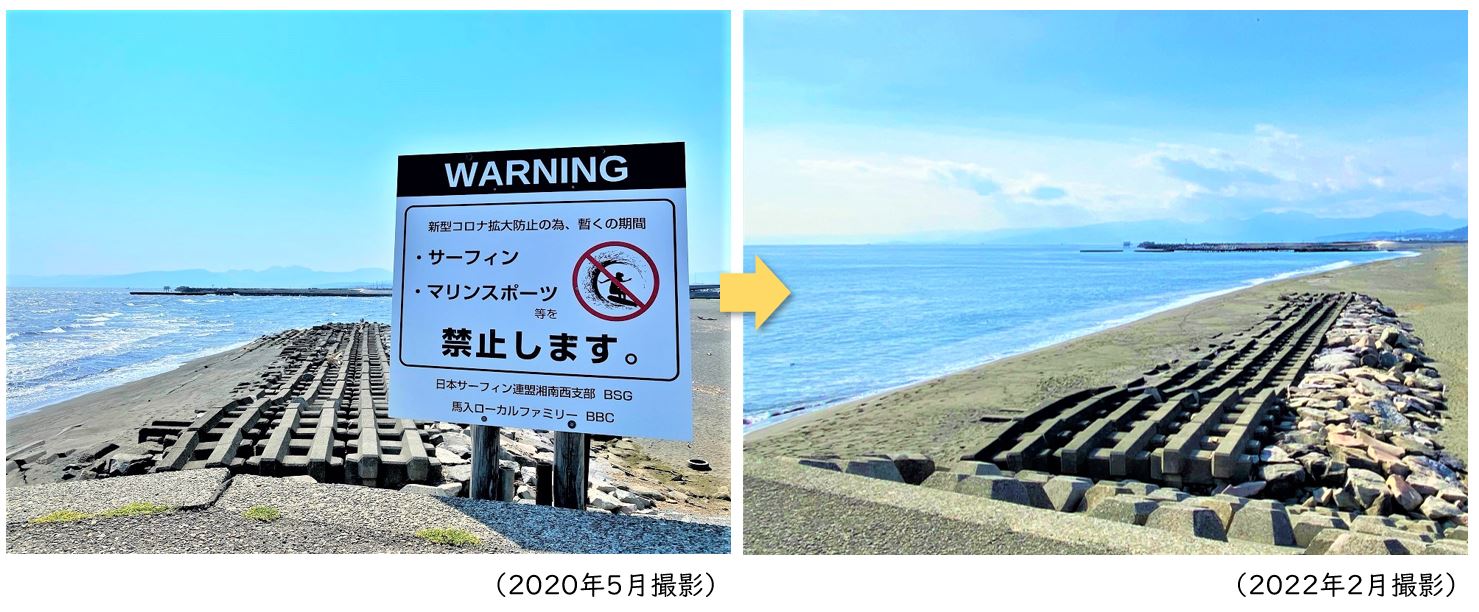
The "marine sports prohibited" sign that was installed after the state of emergency was declared two years ago has now been removed.
(Text & photo by Hideki Sato)
——————————————————————————————————————-
"Hideki's Yuruyuru Nagisahoki" Click here for the back number!
ep8 "Look for discomfort!" Quiz 2 ep7 "What is this?" Quiz ep6 "Beach of Corona"
ep5 "Encyclopedia of Garbage Ashore" ep4 "Encyclopedia of Living Things" ep3 "Natural Perception" ep2 "Bottle Message"
ep1 "Coastal Museum"
Like this article?
